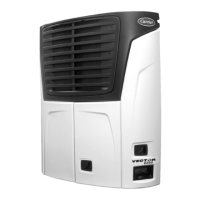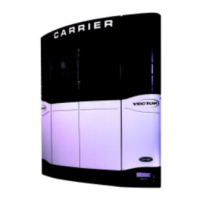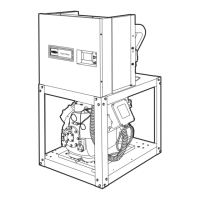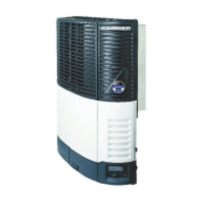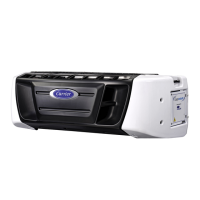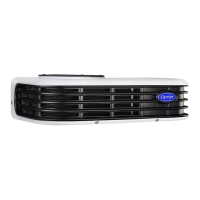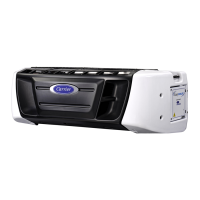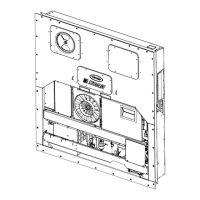62-61753-21
8.4.10 Radiator
The radiator is an integral part of the condenser coil.
Cooling air is drawn through the radiator by the con-
denser fans. The radiator must be clean both internally
and externally for adequate cooling.
Use only monopropylene glycol anti-freeze
as glycol by itself will damage the cooling
system. Always add pre-mixed 50/50 anti-
freeze and water to radiator/engine. Never
exceed more than a 60% concentration of
anti-freeze. Use a low silicate anti-freeze.
NEVER POUR COLD WATER INTO A HOT
ENGINE, however hot water can always be
added to a cold engine.
Do not remove the cap from a hot radiator;
if the cap must be removed, do so very
slowly in order to release the pressure
without spray.
Do the following to service the cooling system:
a. Remove all foreign material from the conden-
ser/radiator coil by reversing the normal air flow. (Air
is pulled in through the front and discharges over
the engine.) Compressed air or water may be used
as a cleaning agent. It may be necessary to use
warm water mixed with any good commercial dish-
washer detergent. Rinse coil with fresh water if a de-
tergent is used.
b. To fully drain the coolant, remove the lower radiator
hose and radiator cap.
c. Re-Install hose and fill system with clean, untreated
water to which 3 - 5% of an alkaline based radiator
cleaner is added - 6 oz. (151 grams) to 1 gallon
(3.78 liters) of water.
d. Run engine 6 to 12 hours and drain system while
warm. Rinse system three times after it has cooled
down. Refill system with water.
e. Run engine to operating temperature. Drain system
again and fill with 50/50 water/anti-freeze mixture.
f. Check condition of the water pump V-belt. Refer to
Section 8.4.11
8.4.11 Water Pump V-Belt
Beware of moving poly V-belt and belt
driven components.
When working with belts, beware of pinch
points.
The poly V-belt is driven by a sheave on the engine
crankshaft. Its function is to drive the water pump.
To replace the poly V-belt, perform the following steps:
1. Using the proper size socket, slowly rotate the
crank by turning the crank pulley nut. At the same
time, use a flat, blunt object to guide the belt off the
crank pulley. Be careful not to damage grooves on
the pulley.
2. Replace the poly V-Belt by positioning the belt on
the water pump pulley, and while rotating the en-
gine (as in step 1), use a flat, blunt object to guide
the belt onto the crank pulley. Be careful not to
damage grooves on the pulley or belt.
8.4.12 Engine Speed Sensor
a. Verify that the wiring to sensor (ENSSN) is correct.
See wiring schematic, Section 10.
b. Check voltage at the RPM Sensor connector with
the Run Relay energized (Refer to Note 2, page 7-2)
c. Voltage between ENRPMA-2MP31 and
ENRPMC-2MP7 should be 5.0 VDC.
d. Check continuity between ENRPMB and 2MP18.
The +5.0 VDC (terminal B) is common be-
tween the Compressor Discharge Pressure
Transducer, the Compressor Suction Pres-
sure Transducer, and the RPM sensor. If
this circuit is shorted to ground (due to one
of the mentioned components being defec-
tive, or a worn wire) the MessageCenter will
show
Suction Pressure: -1 bar (-14.7 PSIG)
Discharge Pressure: 0 bar/psig
Engine RPM: 0.
e. If the above tests check OK, read the preceding
WARNING. If the RPM display is still not correct, re-
place the RPM sensor.
8.4.13 Crankcase Breather
The engine uses a closed type breather with the
breather line attached to the cylinder head cover. (See
Figure 8-8)
The breather assembly should be cleaned at every
service interval or once a year (whichever comes first).
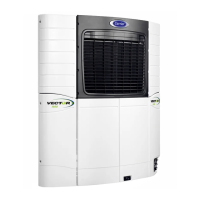
